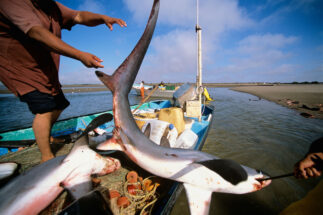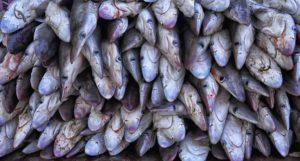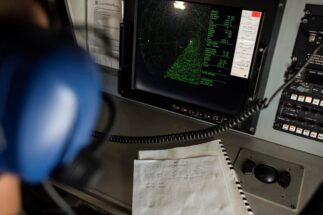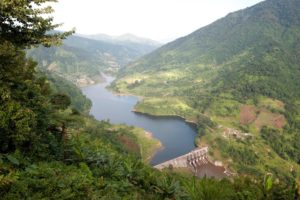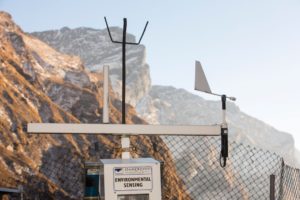With a fine cut, Diego Cardeñosa extracts a tiny piece of meat from a shark’s fin. He washes it and mixes it with a chemical cocktail to extract its DNA. This Colombian scientist’s mission is to determine which endangered species hit the markets of Hong Kong – the world’s largest importer and exporter of shark fins – and Guangzhou – the largest in mainland China.
Over the last six years, Cardeñosa’s work has been crucial in establishing where these species come from and in better understanding a business so lucrative that an estimated 100 million sharks are pulled from the ocean each year so their parts can be traded, leaving many species on the brink of extinction.
Now, a portable laboratory, which Cardeñosa designed and can quickly detect sharks DNA, could be the fastest and most effective solution to combat their illegal trade.
“It’s like a covid test for sharks,” he said.
Tracking fins
A kilo of large shark fins can cost $1,000, so Cardeñosa was forced in 2014 to come up with a cheaper way to monitor the two main Asian markets. His strategy was to focus on a by-product: processed fins.
These come in bags of hundreds or thousands of triangular pieces of shark meat that have undergone a chemical process to remove the skin and muscle. In the end, all that is left is a yellow filamentous structure that dissolves in soups and gives a noodle-like texture. A single cup, a symbol of status and economic prosperity in some Asian countries, can cost up to US$300 in a restaurant.
Because all fins lose their original shape and colour and cannot be identified with the naked eye when displayed, scientists must analyse the DNA of each sample to determine its species.
But Cardeñosa encountered a problem: how to analyse DNA that has lost its quality and is fragmented? When the shark is alive, the body has mechanisms to self-repair the DNA if it is damaged, but once the animal dies and its fin is cut off, those mechanisms are deactivated and the DNA begins to degrade naturally.
“Normally a shark DNA test is done with a gene called Cytochrome oxidase I, which is about 650 base pairs, a relatively long sequence of letters that starts like this: CHATTTCCCAATCAAACC. But because the DNA was degraded and fragmented, we devised a protocol that uses a piece of only 150 base pairs for identification,” says Cardeñosa, who heads the Colombia Azul Foundation. Information for sequencing is extracted from pieces that can be as small as a third of a grain of rice.
Six years and 12,000 samples later, he and his five American colleagues discovered that there are about 90 species of sharks in the markets of Hong Kong and Mainland China, yet only five dominate the business: the blue, the silky, the common hammerhead, the smooth hammerhead and the mako.
“Of every 100 samples we take, 70 are of these same species,” Cardeñosa says.
The most worrying aspect of this finding is that of this top five, four are classified as endangered species by the International Union for Conservation of Nature (IUCN) Red List, and appear in Appendix II of the Convention on International Trade in Endangered Species of Wild Fauna and Flora (CITES), which regulates the trade in wild animals and plants.
Many times legal proceedings do not move forward or are hindered by not having timely answers
Cites currently lists around 39,000 species. The vast majority appear in Appendix II, which means they are not necessarily threatened with extinction but could be if trade is not strictly controlled. To achieve this, authorities require export permits certifying that the survival of the species is not at risk and prove that animals were captured legally.
When researchers realised that these endangered species occupied such a significant part of the shark fin market, they quickly asked themselves: Are international restrictions being violated? In reviewing data on legal imports of sharks into Hong Kong between 2015 and 2017, they found that only 0.4% of the approximately 5,000 tonnes of fins imported were of Cites species.
“With those numbers, the most logical thing is to think that the Cites species are scarce in the markets, but in reality we found that they represented 15%,” says Cardeñosa.
A comparison of his findings with legal records suggests that official figures were the tip of the iceberg.
Victims from Mexico to Peru
In May 2019, Diego Cardeñosa learned that Hong Kong customs authorities had made the largest ever seizure of shark fins: 38,500 sharks from Ecuador totalling 26 tonnes. The entire shipment, distributed in two containers, was valued at US$1.1 million.
Suddenly Cardeñosa’s estimations did not seem far-fetched. With the same samples that he took from Asian markets to determine the most common species, he began to identify their origin. The team focused on one particular species: the thresher shark (Alopias pelagicus), which uses its tail to hunt because it has very small jaws. They found that 85% of fins in Guangzhou and Hong Kong come from the eastern tropical Pacific – from Mexico to Peru.
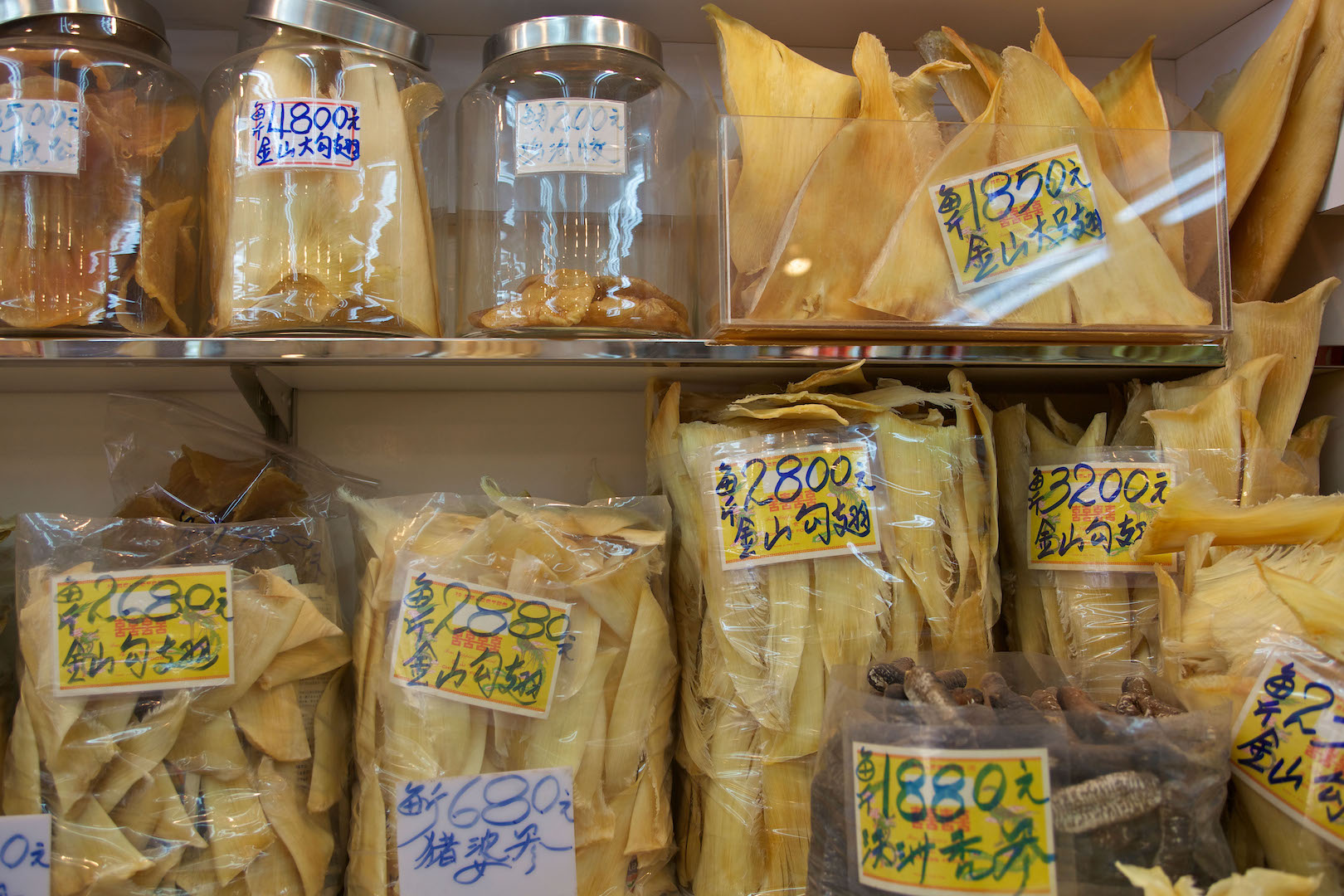
Scientists used data from the thresher shark because the differences within populations are so marked that they can appear to be from different species.
Although the exact country of origin of the fins cannot be identified, Cardeñosa’s study, published in the journal Animal Conservation, shows that Latin America requires special attention. “It’s super important to know where they come from because that’s where resources are prioritised for conservation,” he says.
In the last week of September, more than 300 mainly Chinese vessels that were just outside Ecuador’s exclusive economic zone (EEZ) that encircles the Galapagos Islands, moved towards Peru. According to the environmental organisation Oceana, this fleet accumulated over 70,000 hours of fishing in Ecuadorean waters between July 13 and August 13.
Oceana not only called for ensuring that all seafood is “safe, legally caught and responsibly obtained”, but also warned that the Chinese fleet has been “systematically involved in violations related to overfishing, fishing of endangered shark species, illegal intrusion into the jurisdiction, the granting of false licences and catch documentation”.
“The genetic study helps to identify species and their origin, but not necessarily to reduce finning or increase conservation of sharks and their ecosystems,” says marine biologist Sandra Bessudo, who has led the conservation of Malpelo Island in the Colombian Pacific, now a national park and a World Heritage Site. Ideally, she says, it would be a coordinated monitoring effort as a region.
“Countries must unite in the fight against illegal, unreported and unregulated fishing, in which the movement of absolutely all vessels on the high seas is known by satellite and in real time. It’s the only way to really know what is happening and to direct effective control and surveillance actions, whether by water or air,” says Bessudo, who is director of the Malpelo Foundation.
China ranks first in the index of illegal, unreported and unregulated (IUU) fishing, which is compiled by the Global Initiative against Transnational Organized Crime and brings together more than 500 experts on illicit economies.
Rapid testing for customs detectives
The objective behind data such as Cardeñosa’s is to help reduce the illegal trafficking of Cites species by improving authorities’ ability to detect them. To this end, he developed the portable laboratory along with colleague Demian Chapman to enable port and airport officials to obtain quick results on the species they find.
Each sample in the DNA Toolkit, as it was called, has a value of US$0.94 and takes a maximum of 3.5 hours to respond. When a customs inspector analyses the small piece of meat from the animal, a curve appears on his computer. Each curve, through its specific variations, represents a different species. If nothing appears on the screen, it means that it is not a Cites shark.
“This is crucial because many times legal proceedings do not move forward or are hindered by not having timely answers,” says Cardeñosa, who lives between Colombia and China. Today, the method is used in Hong Kong and Peru and will arrive in Indonesia next year.
Cardeñosa’s portable lab evolved over the years. In 2019, environmental and customs authorities in Hong Kong proposed that he use a similar method to identify eels, another species marketed for sushi and other dishes.
Instead of drugs, ‘mules’ carry live baby eels in their luggage, Cardeñosa explains. However, when they are very small, their species cannot always be known. “Authorities could only confiscate the cargo but not prosecute the people for illegal trafficking” Cardeñosa says.
However, that changed in December 2018 when Cardeñosa received an urgent call. Hong Kong authorities told him that two people had arrived from Spain with four suitcases full of eels and he was needed immediately to identify them. He grabbed his portable lab, arrived at the city’s airport and ran the tests. All were European eels, listed as critically endangered. “Thanks to that identification, the first prosecution in Hong Kong’s history for illegal trafficking of European eels was possible,” Cardeñosa says proudly.
He has carried out similar exercises with Colombia’s mata mata turtles, of which there are two populations nationwide; one in the Amazon and the other in the Orinoco. But it is not easy to distinguish them. “When an illegal shipment is captured, a reintroduction has to be made, but first you have to do a DNA analysis to know where it came from. If you don’t do it and you mess up, you start to intervene in evolutionary processes and unbalance the populations,” Cardeñosa says.
Thanks to his method, authorities can now detect where the turtles come from in less than two hours. This year, the first test was done with a shipment of around 2,000 turtles confiscated in Leticia, the Colombian port on the Amazon River. However, the DNA analysis showed that they came from the Orinoco. This test saves money, time, and above all, prevents many from dying in captivity before being reintroduced into their habitat.
For Diego Cardeñosa, the most important thing is to answer the “most basic questions in science”. He says that these include identifying shark conservation areas, the status of the populations, the different species, where they are found and in what numbers, and how to implement fisheries management measures to recover shark populations that are no longer so abundant.
“Without those samples we can make up any number of things, but they’re not going to be effective if we don’t know what, where, when and why,” says Cardeñosa, who has also found shark DNA in pet concentrate and cosmetics.
“We don’t have basic science information and so we can’t move forward.”
